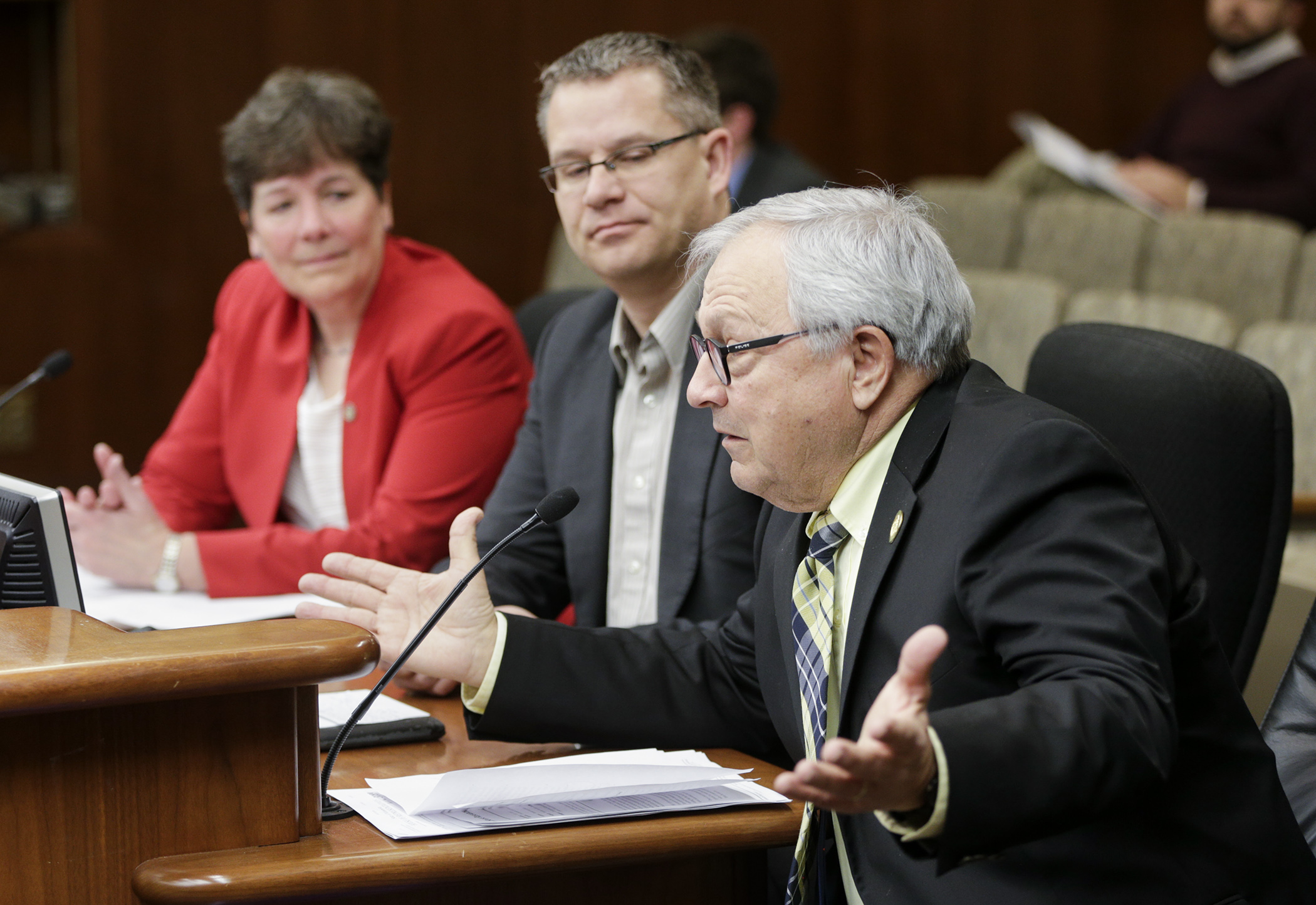Would tax incentives solve rural Minnesota’s health care crisis?
Over three decades, Blooming Prairie’s medical clinic has gone from being fully staffed to retaining a nurse practitioner one day a week, if she isn’t busy.
The situation, according to Rep. Peggy Bennett (R-Albert Lea), is not uncommon in rural Minnesota.
Bennett sponsors HF3189, which would grant an abatement of the state general property tax and provide a sales tax exemption for medical facilitates in underserved areas, a measure Bennett believes would create incentives for medical facilities to return.
The bill was laid over by the House Property Tax and Local Government Finance Division Wednesday for possible omnibus bill inclusion. There is no Senate companion. Bennett also presented the bill to the House Taxes Committee on an informational-only basis.
 Blooming Prairie Mayor Harold Peterson testifies March 7 before the House Property Tax and Local Government Finance Division in favor of HF3189, sponsored by Rep. Peggy Bennett, left. Photo by Paul Battaglia
Blooming Prairie Mayor Harold Peterson testifies March 7 before the House Property Tax and Local Government Finance Division in favor of HF3189, sponsored by Rep. Peggy Bennett, left. Photo by Paul Battaglia“We are experiencing a crisis in both health care access and affordability,” Bennett said. “This bill is trying to bring a little incentive to bring some access back to rural Minnesota.”
The bill would ultimately require local approval for a 15-year period. Other qualifying factors include the facility being located in a county with federal designation as a medically underserved area and a local government resolution stating the medical need.
Rep. Lyndon Carlson Sr. (DFL-Crystal) asked why the seven-county Twin Cities metropolitan area would be left out.
“Right now my biggest target is the huge crisis we’re seeing in rural Minnesota, with both access to health care as well as affordability,” Bennett said.
Chad Adams, Albert Lea city manager, explained how his city’s clinic is in the process of transferring several key services to Austin. The distance between the cities is 20 miles, but communities served by the current hospital are up to 45 miles from Austin. Adams said about 68,000 residents use the Albert Lea campus as their primary service provider.
WATCH Full video of the March 7 tax committee hearing
The services moving out of Albert Lea include the intensive care unit, all inpatient surgeries and beds and the birthing center.
“In 2019 and forward, there will not be any babies born in the community of Albert Lea or Freeborn County,” Adams said.
Blooming Prairie Mayor Harold Peterson said his town’s story is currently being played out in small towns across Minnesota.
“We went from having a full-time physician with staff in our clinic, to a nurse practitioner in our clinic with a staff, to a nurse practitioner four days a week with no staff, to a nurse practitioner two days a week, and now presently we have a nurse practitioner one day a week if she’s available,” Peterson said. “This is really not access to basic health care. If you can’t be sure it’s going to be there, well, it really isn’t there.”
Related Articles
Search Session Daily
Advanced Search OptionsPriority Dailies
Ways and Means Committee OKs proposed $512 million supplemental budget on party-line vote
By Mike Cook Meeting more needs or fiscal irresponsibility is one way to sum up the differences among the two parties on a supplemental spending package a year after a $72 billion state budg...
Meeting more needs or fiscal irresponsibility is one way to sum up the differences among the two parties on a supplemental spending package a year after a $72 billion state budg...
Minnesota’s projected budget surplus balloons to $3.7 billion, but fiscal pressure still looms
By Rob Hubbard Just as Minnesota has experienced a warmer winter than usual, so has the state’s budget outlook warmed over the past few months.
On Thursday, Minnesota Management and Budget...
Just as Minnesota has experienced a warmer winter than usual, so has the state’s budget outlook warmed over the past few months.
On Thursday, Minnesota Management and Budget...